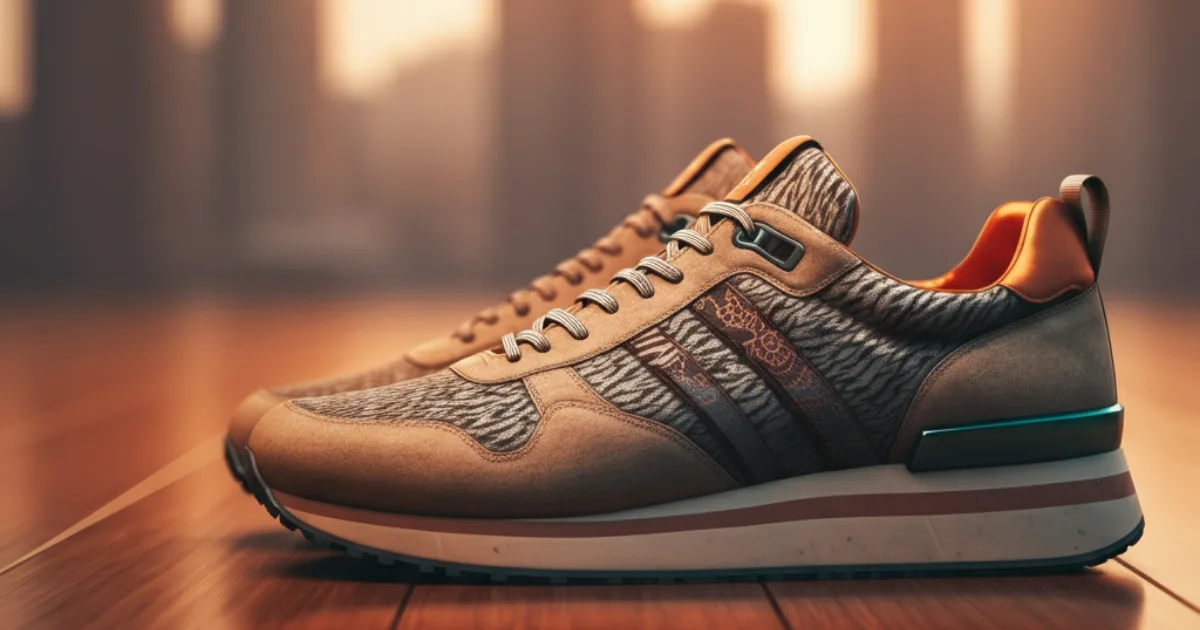Sneakers have effortlessly transcended their humble beginnings in athletic performance to become some of the most coveted fashion staples worldwide. Once reserved for running tracks, basketball courts, and gym floors, these shoes now dominate the streets, runways, and social media feeds. But this begs the question, are sneakers essential or simply a luxury that taps into the human desire for identity and status?
This blog explores both sides of the debate, considering the practical benefits of sneakers and their evolving role as a high-demand fashion statement. Join us as we analyze the economic and cultural impact of these once-functional pieces of footwear.
The Case for Necessity
For decades, sneakers have been regarded as essential footwear for both physical activity and everyday life. Their practicality, ergonomic design, and even health benefits make a strong case for why they’re a necessity for millions of people.
Supporting Active Lifestyles
Sneakers are designed to support an active lifestyle and offer the necessary comfort, traction, and protection for rigorous physical activities. Whether you’re an avid runner, a weekend jogger, or a gym enthusiast, sneakers are often the safest option for your feet. Without them, engaging in high-impact activities could result in discomfort or even injury.
For example:
- Running or Walking: Sneakers offer cushioning and arch support to reduce stress on your joints.
- Sports and Fitness: High-performance sneakers are tailored for specific movements, such as lateral shifts in tennis or grip on basketball courts.
- Work-Related Utility: For professions that require being on your feet all day, such as nurses or warehouse workers, sneakers offer a combination of support and durability.
Investing in a well-made pair can improve not only your comfort but also your physical well-being.
Foot Health and Injury Prevention
Sneakers also play a critical role in promoting foot health. Podiatrists often recommend wearing supportive sneakers to prevent conditions such as plantar fasciitis, shin splints, or stress fractures. Compared to other types of footwear, sneakers are built to reduce the strain placed on your feet and legs during prolonged wear.
From a health perspective, sneakers appear to be less of a “nice to have” and more of a practical solution for long-term comfort and injury prevention.
The Argument Against Necessity
While sneakers certainly have their merits from a functional standpoint, not all sneakers are created equal. The explosion of sneaker culture and branding has shifted these functional items into the realm of luxury, where they are often valued for style and exclusivity rather than practicality.
Sneakers as a Fashion Trend
The rise of sneaker culture has brought with it a growing emphasis on design and status. Limited-edition collaborations with celebrities and luxury designers have redefined sneakers as aspirational items rather than purely functional footwear. Consider brands like Nike, Adidas, and Jordan releasing exclusive designs that sell out in minutes, only to reappear on resale platforms at double or triple the original retail price.
This trend has led to a curious paradox:
- On one side, sneakers are marketed as practical, everyday footwear.
- On the other side, their value is heavily influenced by branding, scarcity, and the ability to signal social status.
This raises the question of whether owning multiple pairs of sneakers (often driven by aesthetic desires) is globally justifiable or necessary.
Are All Pairs Created Equal?
Not all sneakers are designed with function in mind, either. Luxury sneakers from brands like Gucci or Balenciaga prioritize style over substance. These price tags often reflect the designer’s label rather than the durability or comfort of the actual shoe.
Such examples highlight that many sneakers are ultimately luxury items, serving more as symbols of fashion than functional footwear.
Sneakers as Cultural and Economic Powerhouses
Beyond their function and aesthetic appeal, sneakers have left an undeniable mark on modern consumer culture. By bridging the worlds of fashion, sport, and self-expression, sneakers have created an ecosystem that thrives on individuality and storytelling.
Personal Expression Through Sneakers
For many, sneakers go beyond being “just shoes.” They have become an essential medium for self-expression. A bold pair of high-tops speaks volumes about someone’s personality, while a classic white pair reflects minimalistic tastes. The wide variety of sneaker styles allows people to curate their image and creatively differentiate themselves from the crowd.
This connection to self-expression partially explains why people are willing to spend $500 or more on a pair of sneakers, knowing it will make them feel part of a culture or community.
Sneaker Culture’s Economic Impact
The global sneaker industry was valued at $79 billion in 2020 and is projected to reach $120 billion by 2026. High-demand sneakers have fueled a massive secondary market, where reseller platforms like StockX and GOAT allow sneakers to be traded like assets.
These platforms have made sneakers synonymous with exclusivity and reinforcement of societal hierarchies, showcasing economic and cultural implications for consumerism.
The sustainability aspect is also worth noting. With the rise of fast fashion and sneaker production, the industry has faced increasing criticism regarding waste and environmental impact. While strides are being made toward developing eco-friendly sneakers, many brands still fall short in addressing sustainability concerns.
Finding Balance Between Need and Desire
Ultimately, the debate over whether sneakers are a necessity or luxury comes down to perspective. While sneakers are undeniably essential for physical activities and foot health, many modern iterations owe their appeal to branding, exclusivity, and cultural significance. Owning that additional pair from the latest collaboration might not be a necessity, but for many, it reflects a form of art, identity, and belonging.
For conscious consumers, the key is finding balance. Prioritize quality over quantity and evaluate whether purchases are driven by functional needs or fleeting trends. While it’s okay to indulge in the occasional statement sneaker, remember to ground your decisions in what truly adds value to your life.


